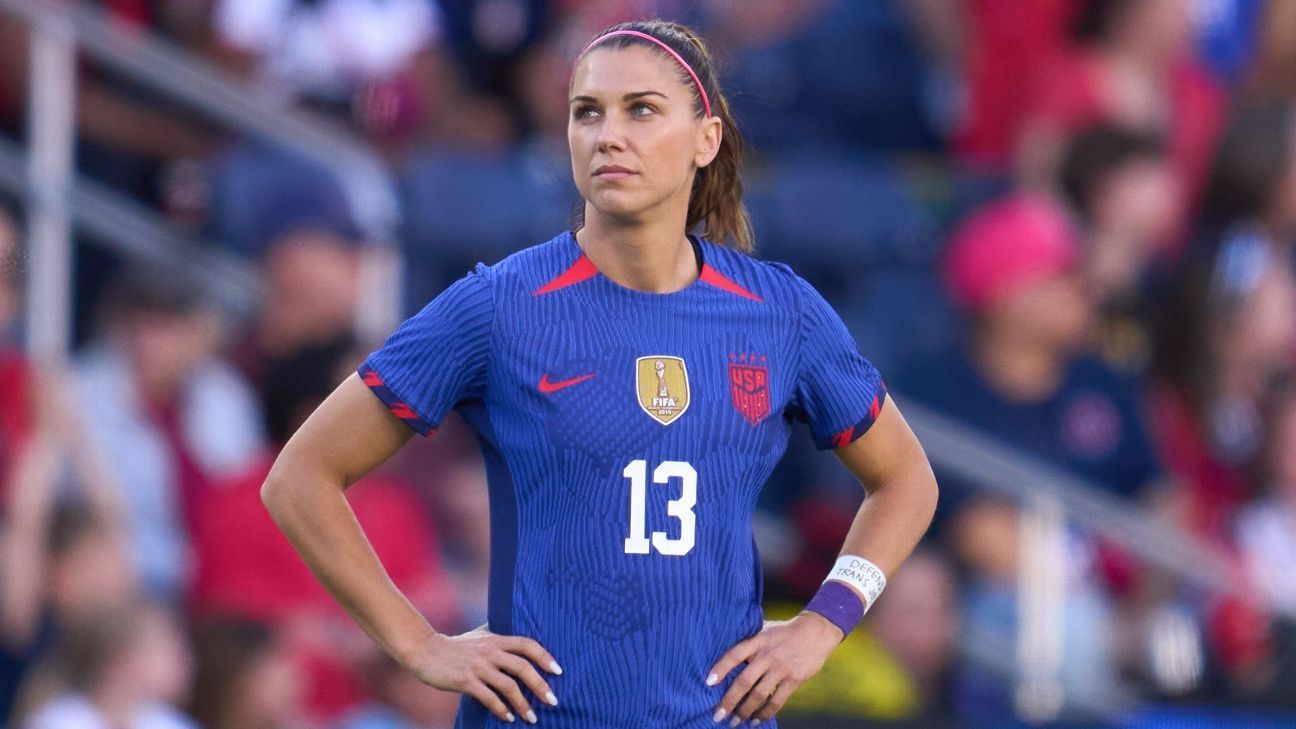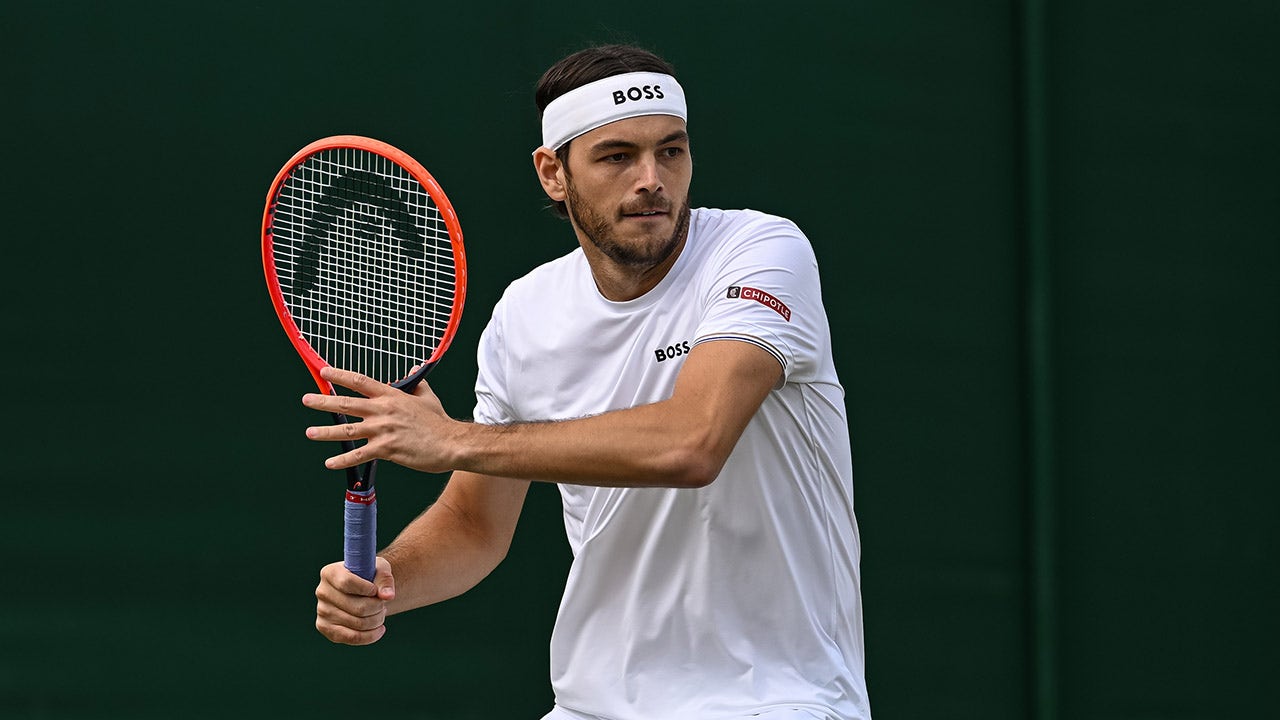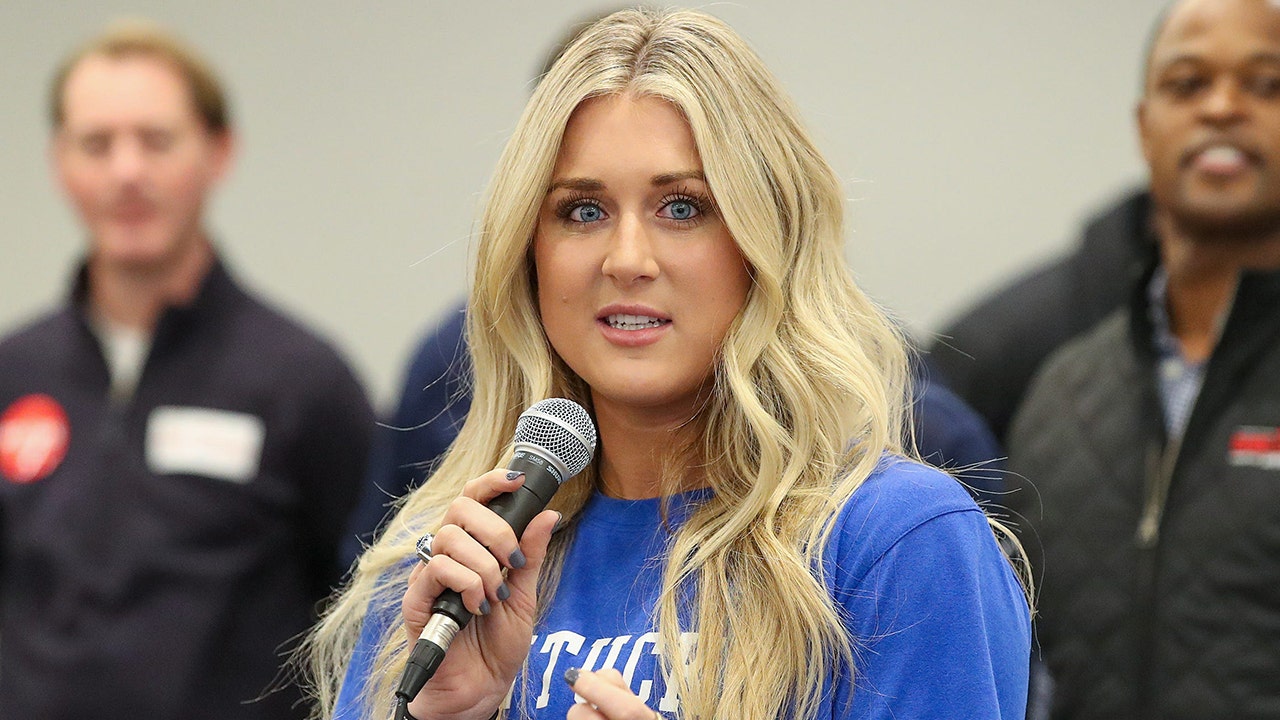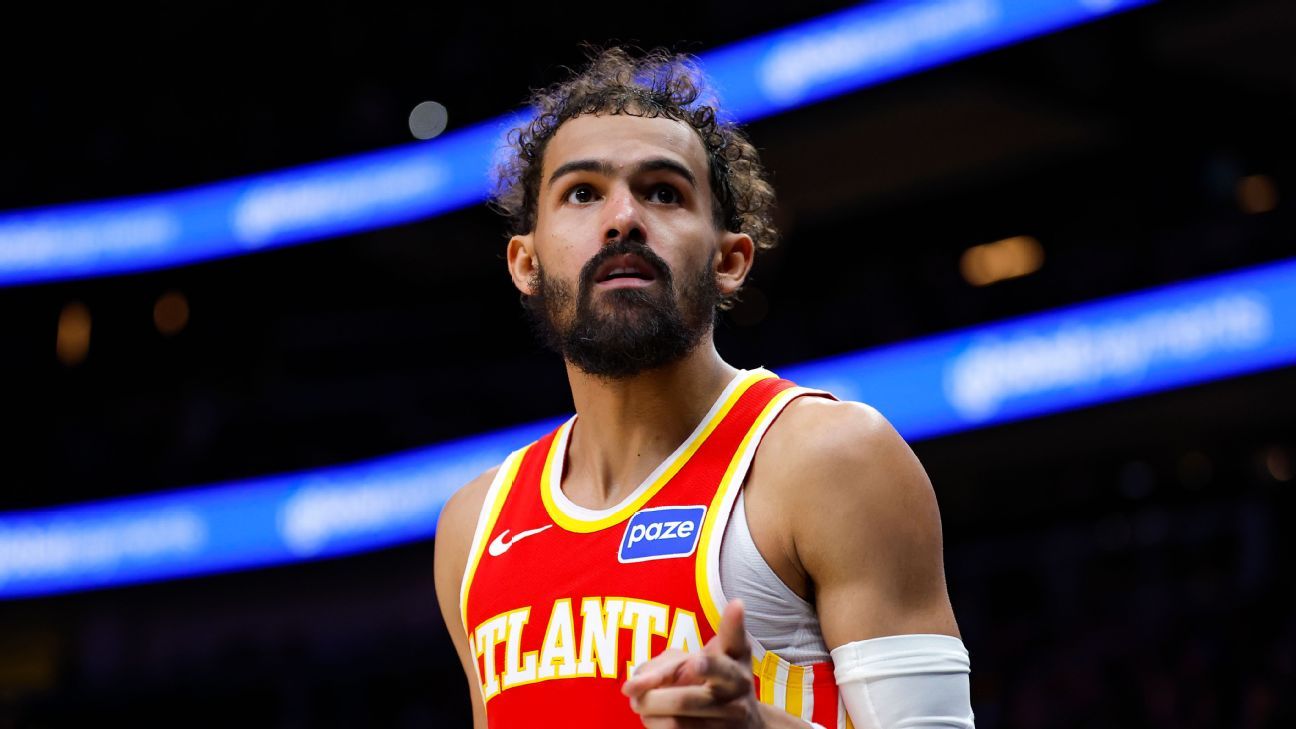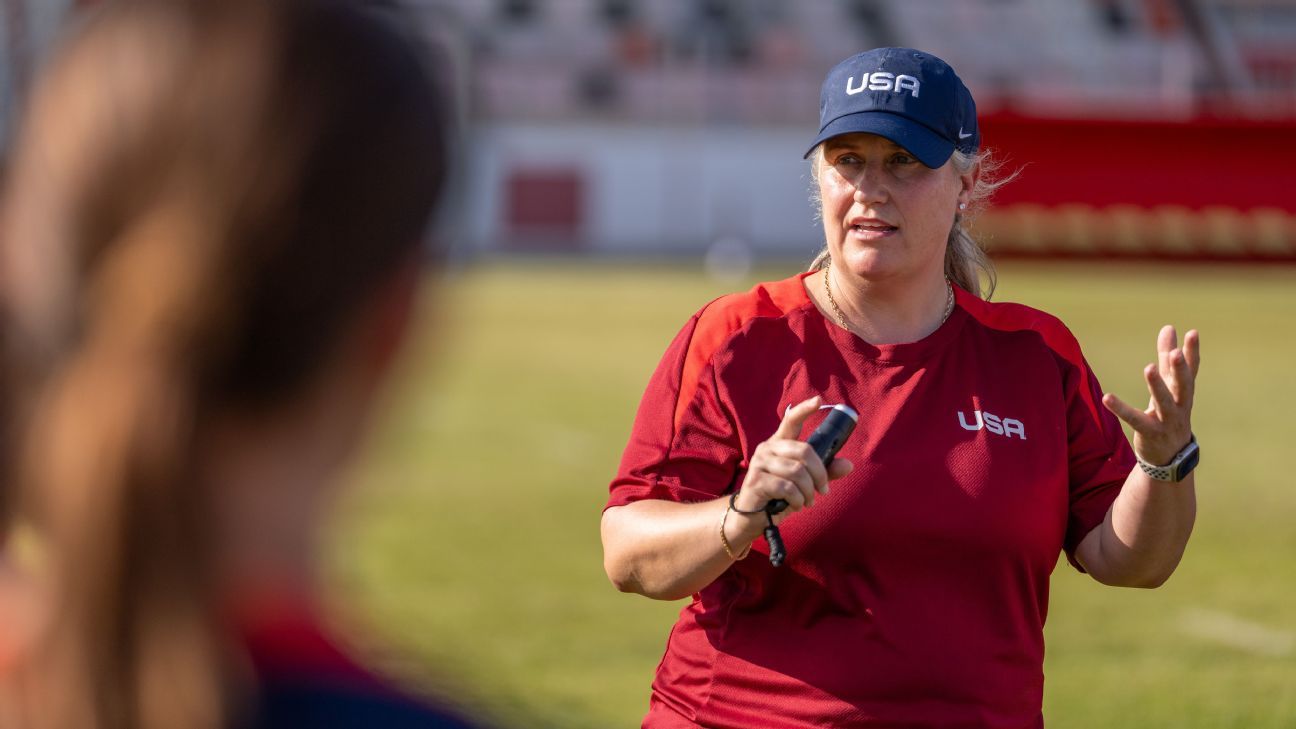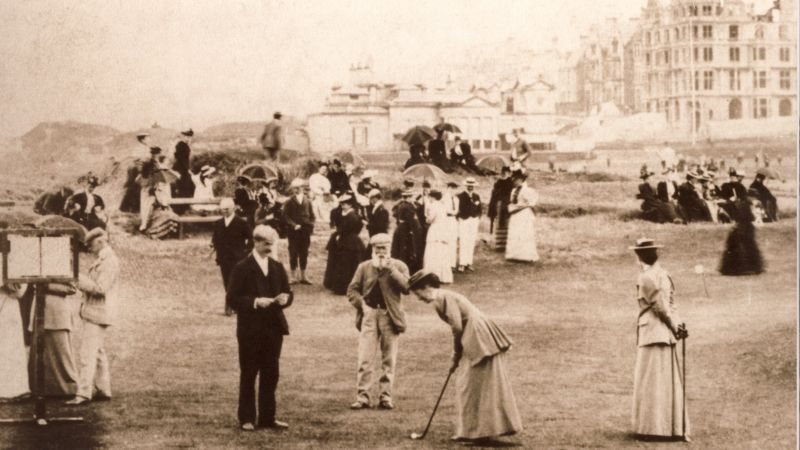Alex Morgan and the United States women's national team have been synonymous for the past 14 years. But on Wednesday he brought news of an abrupt and surprising end to the forward's run of major tournaments with a team whose standards he helped maintain and whose status he greatly elevated.
Morgan was left off USWNT head coach Emma Hayes' 18-player Olympic roster and is not one of four alternates heading to France. Instead, he will watch the USWNT in a major tournament from afar for the first time since winning its opening match in March 2010. The last time the USWNT played a major tournament without Morgan was at the 2008 Olympics.
This isn't the ending she would have imagined, and maybe she's still hoping it's not the end at all, but Wednesday's news was a stark reminder that few athletes make it on their own terms.
“Today I am disappointed not to have the opportunity to represent our country on the Olympic stage,” Morgan said in a statement on her social media accounts. “This will always be a tournament that will be close to my heart and I am incredibly proud every time I don the crest.”
What does Morgan's omission mean for the USWNT at the Olympics and beyond?
On a call with reporters Wednesday, Hayes repeatedly stressed how difficult it is to select just 16 field players for an Olympic roster. She praised Morgan as a person and a player in the limited time they worked together at the USWNT's most recent camp.
Ultimately, though, Morgan is a rare breed as a No. 9: a pure striker who must play centrally. For more than a decade, the rest of the pieces have been filling in around him, and his skill set, combined with the USWNT's depth chart, justified it.
Morgan will turn 35 next week, however, and the USWNT's player pool has gotten younger in recent years, as most of Morgan's teammates from the previous generation have retired or left the international game. This USWNT Olympic roster is, on average, four years younger than the previous Olympics three years ago. The group is also loaded with versatility, from the electric Sophia Smith to Morgan's San Diego Wave teammate, 19-year-old Jaedyn Shaw, who can play any role in the top four roles.
Versatility is what Hayes ultimately did. The fluidity and precision of the front three of Smith, Mallory Swanson and Trinity Rodman were on full display in the team's final game, when the trio came off the bench and tortured South Korea's tired defense: five minutes later, all they came in with Smith replacing Morgan. Up top, Rodman dribbled and found Swanson for a subtle backheel move to Smith, who finished for the score.
“Having a roster that can adapt is essential,” Hayes told reporters Wednesday. “We have tough shifts between games, so of course having players in the squad who could play more than one position was important for the depth of the team.
“But I also think there are players in the squad in the forward areas who are performing well and the decision to choose those players was one that we certainly deliberated. But I think it is a balanced squad. I have considered all the factors that we are going to need during the Olympic Games, and [the roster is] one I'm very happy with.”
Morgan has long possessed a more diverse skill set than he is often given credit for. He burst onto the scene in 2010 when he was 20 years old with blistering speeds to punish defenses. His play earned him the nickname he was happy to leave behind, “Baby Horse,” and his style fit perfectly with a USWNT that played straight. The notion (or stigma, sometimes) that she is simply a quick striker who can run behind has dogged her ever since.
Instead, Hayes has opted to rely on a group of forwards that is more dynamic and less limited to traditional roles. Smith will operate as a number 9 who can run in behind and take advantage of the serve, but will also drift wide to allow Swanson and Rodman to cut inside and find the ball closer to the net. Shaw can do the same.
All of those players are more creative off the dribble than Morgan, who likes to keep the ball at her feet and leave it to combine with her teammates. Hayes’ preferences suggest she envisions a USWNT that will look to unlock teams off the dribble more often than in the past — a criticism she publicly voiced about the U.S. style of play before accepting the job.
However, Morgan remains one of the most prolific forwards to wear the United States jersey: her 224 caps and 123 goals rank ninth and fifth, respectively, in the history of the United States women's national team. She was, and remains, the second player along with Mia Hamm to score 20 goals and 20 assists in one year. For years, her status on the team was not in doubt.
He has scored some of the most important goals in the team's history. His overtime goal in the 2012 Olympic semifinal to beat Canada at the end of a 4-3 thriller remains one of the most iconic in American history. His goal against England in the 2019 World Cup semi-final is another highlight.
Her play in that 2019 tournament is most widely remembered for her tea-drinking celebration that caused a stir in England, but what the USWNT needed was the dirty work she did beyond scoring. That was Alex Morgan's return to goal and taking a beating for the team that defined the evolution of his game. He was part of how the Americans achieved a victory over Spain in the round of 16 in 2019.
1:28
Kassouf: Morgan's absence from the Olympics is a “big decision” by Hayes
Jeff Kassouf reacts to the news that Alex Morgan will not be part of the USWNT's Olympic roster in Paris.
Lately, however, her position in the USWNT has been questioned more frequently, but each time she responded.
Former USWNT head coach Vlatko Andonovski attempted to rebuild the team in 2022 and looked to Catarina Macario as the new No. 9. That plan, which left Morgan off the roster earlier in the year, was cut short when Macario left. tore the anterior cruciate ligament.
Morgan returned to the fold for the 2022 World Cup/Olympic qualifying event, where he won the Golden Ball. He also responded with the best club season of his career in 2022, scoring 15 goals to win the Golden Boot. Any The idea of the national team without her was quickly forgotten.
Morgan maintained her starting role for the 2023 World Cup despite questions about her play, and while her performance was forgettable (she didn't score in that tournament), the USWNT was poor throughout and the team's problems ran deeper than those of any player. .
Hayes' arrival as head coach was always assumed to bring significant changes. Hayes is a big personality who is undeterred by tough decisions, and he has a track record to back it all up. Morgan was left out of the team's initial squad for the Concacaf W Gold Cup in February, when incoming Hayes was still semi-retired from the team while finishing coaching Chelsea, but Morgan joined the team following an injury to Mia Fishel . Morgan quickly resumed the starting No. 9 spot in that tournament.
Maybe that's why Wednesday was so shocking. Morgan's place on this team was seemingly in question for the past two years, and each time, she answered the call with a reminder of how good she is.
His form with the San Diego Wave this season (zero goals in eight games) came at the wrong time for this Olympic squad, and is also more indicative of a broader problem with the Wave, who went from winning the Shield on last year. to not win in seven games, so coach Casey Stoney was fired earlier this week.
Sophia Smith always looked like the USWNT's future No. 9, and her recent Golden Boot award, MVP trophy and NWSL Championship convincingly demonstrated that she should be the No. 9 more immediately. Now she is. Hayes will likely play with Swanson and Rodman alongside Smith on the front line, relying on her chemistry to confuse opposing defenses. Shaw, Macario and Crystal Dunn, listed as forwards, add depth at several positions.
Morgan has six career Olympic goals and no player on the Olympic roster has more than one.
She was the last of her generation in the USWNT, the group that won back-to-back World Cups and captured the attention of a nation while fighting for equal pay. Megan Rapinoe's retirement last year and former captain Becky Sauerbrunn's quiet departure after missing the 2023 World Cup due to injury have created a notable departure from the USWNT's experienced and outspoken leaders. Hayes says she loves developing leaders…and she will need them in France.
After years of Morgan forcing herself to return to the team every time she was dropped, this now appears to be an insurmountable task with three years to go until the next World Cup. Instead, it looks like a tough ending to one of the most historic careers in USWNT history. For that reason, this decision could only be seen as a surprise, despite doubts about the versatility of this squad.
But it's also the unfortunate reality of the profession, even for the legends who make it. Missing this Olympic team won't take away from her two World Cup titles and Olympic gold medal, but it doesn't make this apparent end to Morgan's time with the USWNT any less harsh.
As Rapinoe said last year, moments after her final game ended with her tearing her Achilles tendon early in her team's NWSL Championship loss: “You can't always have the perfect ending.”

